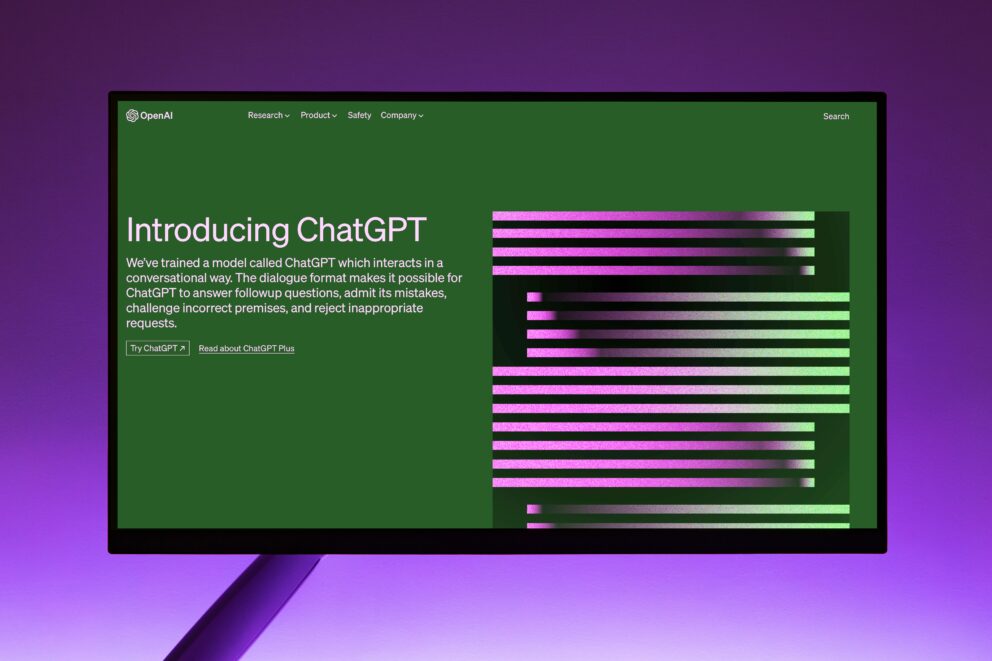The Winning Formula of AI and Personalization in B2B

Summary
Explore the transformative impact of AI and personalization in B2B—gain insights into boosting customer engagement, crafting tailored experiences, and strategically positioning your brand for success.
By Michelle Voznyuk, Marketing Specialist at Heinz Marketing
AI and personalization are making waves in B2B conversations today. We’ve had our eye on personalization for a while, and now AI is stepping into the spotlight as a game-changer. Opinions differ—some think it’s about to revolutionize our work, while others argue it’s already done so. No matter where you stand, one thing is clear: AI is here to stay and is becoming a defining force in the way we do business.
In the age of information overload and empowered buyers, the challenge is not just capturing attention but delivering meaningful, tailored experiences. AI becomes transformative when coupled with effective personalization, emerging as a powerful strategy to cut through the noise and make a lasting impact on your audience.
Imagine a scenario where every interaction with your brand feels tailor-made for each user. This is the promise of personalized AI. It goes beyond generic solutions and adapts dynamically to the unique needs and behaviors of individual users. By harnessing the capabilities of AI, you can gain invaluable insights into customer preferences, behaviors, and pain points, allowing you to curate content and experiences that resonate on a personal level.
Here are some actionable strategies for B2B marketers looking to incorporate AI and personalization into their arsenal:
Behavioral Analysis
What it is: Use AI to analyze how users interact with your digital touchpoints, such as your website, emails, and social media. Track their behavior, such as the pages they visit, the content they engage with, and the actions they take.
How to implement it: Deploy tracking tools and AI algorithms to gather and interpret user behavior data. Identify patterns and trends to understand what interests and engages your audience. Adjust your content and marketing strategies based on these insights.
Segmentation and Targeting
What it is: Divide your audience into segments based on factors like industry, demographics, preferences, and behavior. Use AI to automate the segmentation process and create targeted campaigns for each segment.
How to implement it: Implement AI algorithms that analyze customer data and automatically categorize individuals into segments. Develop personalized content and campaigns tailored to the specific needs and characteristics of each segment.
Dynamic Content Personalization
What it is: Customize content dynamically based on user data and behavior. This involves adjusting website content, email campaigns, and other marketing collateral in real-time to provide a personalized experience for each visitor.
How to implement it: Utilize AI algorithms that can assess user preferences and behaviors. Integrate these algorithms into your content management systems to dynamically generate and display personalized content for each user.
Predictive Analytics
What it is: Use AI-powered predictive analytics to forecast future customer behaviors and needs. This involves analyzing historical data to make informed predictions about what actions a customer is likely to take next.
How to implement it: Employ machine learning models that can analyze historical data and identify patterns. Use these models to predict customer actions, allowing you to proactively tailor your marketing strategies to meet those anticipated needs.
Chatbots and Virtual Assistants
What it is: Implement AI-driven chatbots and virtual assistants to provide personalized, real-time interactions with users. These tools can answer questions, assist customers through the buying process, and offer tailored recommendations.
How to implement it: Integrate chatbot technologies that leverage natural language processing and machine learning. Train these systems to understand user queries, provide relevant information, and guide users based on their individual needs and preferences.
Personalized Email Campaigns
What it is: Enhance email marketing by personalizing content, subject lines, and timing based on individual user preferences and behaviors.
How to implement it: Use AI algorithms to analyze user interactions with your emails. Customize email content based on user behavior, such as their past purchases, content engagement, and responses to previous campaigns. Implement personalized subject lines and optimize send times for each recipient.
Conclusion
In summary, combining AI and personalization is the key to thriving in the information-rich era. By investing in these tactics, B2B marketers can craft an experience that truly resonates with customers, making their brand stand out in the AI-powered marketplace. Tap into the power of personalized strategies to boost your marketing efforts into the future.
Need help with your B2B demand generation efforts? We can help! Reach out to our team.






